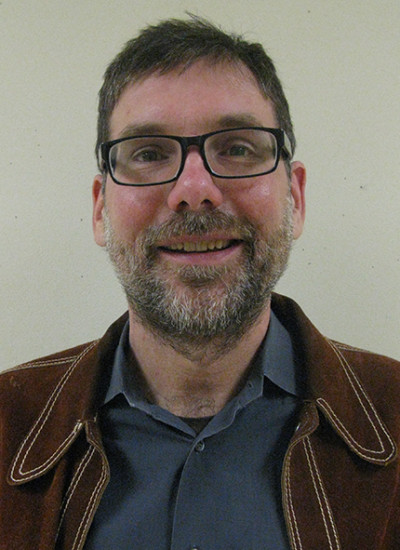Matthew Hj Cordes
Publications
Native protein structures achieve stability in part by burying hydrophobic side-chains. About 75% of all amino acid residues buried in protein interiors are non-polar. Buried residues are not uniformly distributed in protein sequences, but sometimes cluster as contiguous polypeptide stretches that run through the interior of protein domain structures. Such regions have an intrinsically high local sequence density of non-polar residues, creating a potential problem: local non-polar sequences also promote protein misfolding and aggregation into non-native structures such as the amyloid fibrils in Alzheimer's disease. Here we show that long buried blocks of sequence in protein domains of known structure have, on average, a lower content of non-polar amino acids (about 70%) than do isolated buried residues (about 80%). This trend is observed both in small and in large protein domains and is independent of secondary structure. Long, completely non-polar buried stretches containing many large side-chains are particularly avoided. Aspartate residues that are incorporated in long buried stretches were found to make fewer polar interactions than those in short stretches, hinting that they may be destabilizing to the native state. We suggest that evolutionary pressure is acting on non-native properties, causing buried polar residues to be placed at positions where they would break up aggregation-prone non-polar sequences, perhaps even at some cost to native state stability.
Phospholipase D (PLD) toxins from sicariid spiders, which cause disease in mammals, were recently found to convert their primary substrates, sphingomyelin and lysophosphatidylcholine, to cyclic phospholipids. Here we show that two PLD toxins from pathogenic actinobacteria and ascomycete fungi, which share distant homology with the spider toxins, also generate cyclic phospholipids. This shared function supports divergent evolution of the PLD toxins from a common ancestor and suggests the importance of cyclic phospholipids in pathogenicity.
Regions of amino-acid sequence that are compatible with multiple folds may facilitate evolutionary transitions in protein structure. In a previous study, we described a heuristically designed chameleon sequence (SASF1, structurally ambivalent sequence fragment 1) that could adopt either of two naturally occurring conformations (α-helical or β-sheet) when incorporated as part of the C-terminal dimerization subdomain of two structurally divergent transcription factors, P22 Cro and λ Cro. Here we describe longer chameleon designs (SASF2 and SASF3) that in the case of SASF3 correspond to the full C-terminal half of the ordered region of a P22 Cro/λ Cro sequence alignment (residues 34-57). P22-SASF2 and λ(WDD)-SASF2 show moderate thermal stability in denaturation curves monitored by circular dichroism (T(m) values of 46 and 55°C, respectively), while P22-SASF3 and λ(WDD)-SASF3 have somewhat reduced stability (T(m) values of 33 and 49°C, respectively). (13)C and (1)H NMR secondary chemical shift analysis confirms two C-terminal α-helices for P22-SASF2 (residues 36-45 and 54-57) and two C-terminal β-strands for λ(WDD)-SASF2 (residues 40-45 and 50-52), corresponding to secondary structure locations in the two parent sequences. Backbone relaxation data show that both chameleon sequences have a relatively well-ordered structure. Comparisons of (15)N-(1)H correlation spectra for SASF2 and SASF3-containing proteins strongly suggest that SASF3 retains the chameleonism of SASF2. Both Cro C-terminal conformations can be encoded in a single sequence, showing the plausibility of linking different Cro folds by smooth evolutionary transitions. The N-terminal subdomain, though largely conserved in structure, also exerts an important contextual influence on the structure of the C-terminal region.
We report the solution structure of the Cro protein from bacteriophage P22. Comparisons of its sequence and structure to those of lambda Cro strongly suggest an alpha-to-beta secondary structure switching event during Cro evolution. The folds of P22 Cro and lambda Cro share a three alpha helix fragment comprising the N-terminal half of the domain. However, P22 Cro's C terminus folds as two helices, while lambda Cro's folds as a beta hairpin. The all-alpha fold found for P22 Cro appears to be ancestral, since it also occurs in cI proteins, which are anciently duplicated paralogues of Cro. PSI-BLAST and transitive homology analyses strongly suggest that the sequences of P22 Cro and lambda Cro are globally homologous despite encoding different folds. The alpha+beta fold of lambda Cro therefore likely evolved from its all-alpha ancestor by homologous secondary structure switching, rather than by nonhomologous replacement of both sequence and structure.
The homodimeric lambda Cro protein has a "ball-and-socket" interface that includes insertion of an aromatic side chain, Phe 58, from each subunit into a cavity in the hydrophobic core of the other subunit. This overlap between the subunit core and dimer interface hypothetically explains the strong dimerization and weak monomer stability of lambda Cro in comparison to homologues. According to a model developed here and in a previous study [LeFevre, K. R., and Cordes, M. H. (2003) Proc. Natl. Acad. Sci. U.S.A. 100, 2345-2350], the socket cavity evolved in part by replacement of a buried tryptophan in an ancestral stable monomer with a smaller side chain (Ala 33 in lambda Cro). The resulting core defect was in effect repaired by insertion of a different side chain (Phe 58) from a second subunit, generating the ball and socket. Consistent with such an evolutionary trade between intrasubunit and intersubunit interactions, we showed in the previous study that restoration of the ancestral Trp 33 in lambda Cro stabilized the monomer and reduced the extent of dimerization. Here, we report the solution structure of a stable lambda Cro monomer containing the Ala33Trp mutation, which confirms that the restored tryptophan fulfills its ancestral role as a core side chain, filling part of the socket cavity occupied by Phe 58 in the wild-type dimer. The structure also reveals, however, that the cavity is not completely filled by Trp 33, suggesting that its formation could have involved multiple mutations that reduced side chain volume. We offer suggestive evidence of a role of mutations at a second position.


